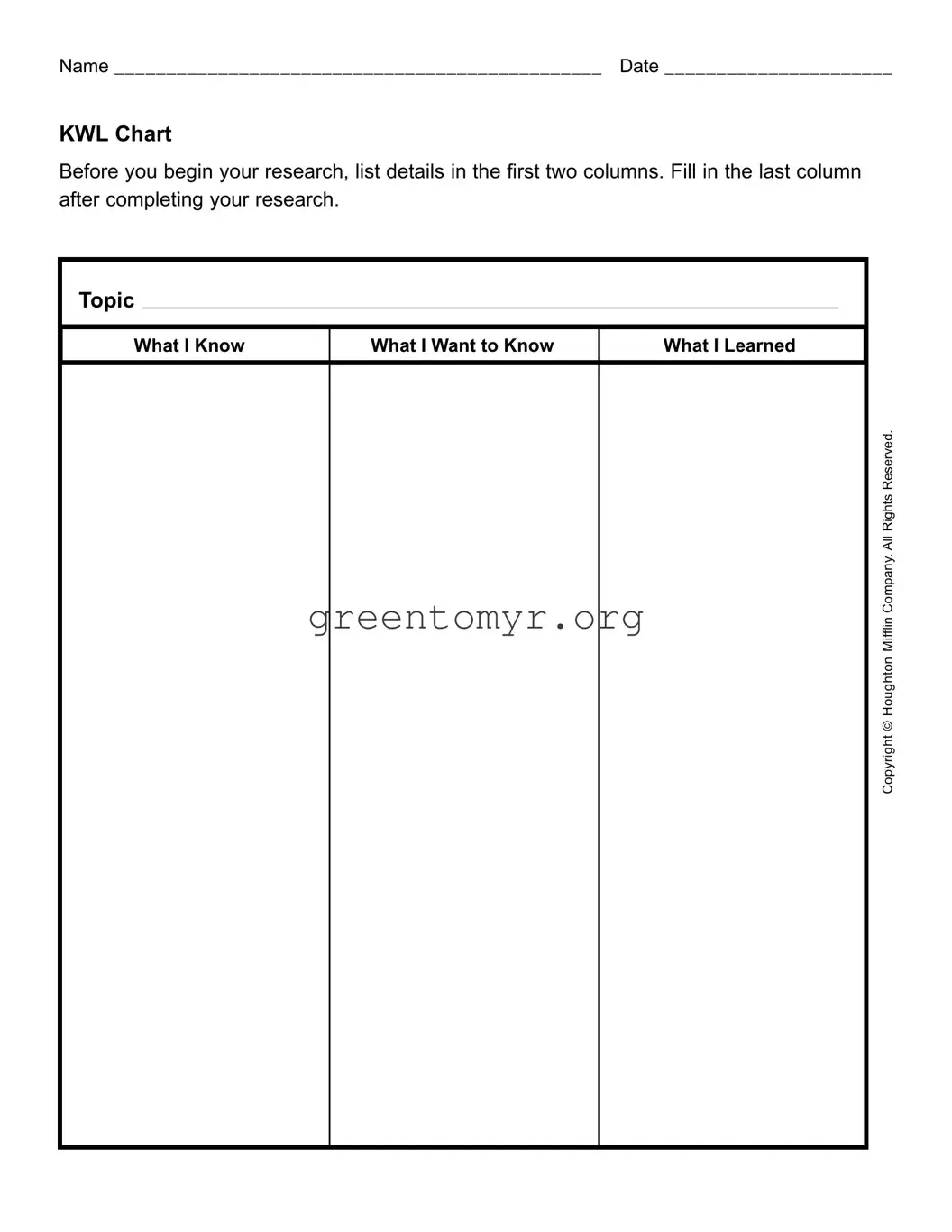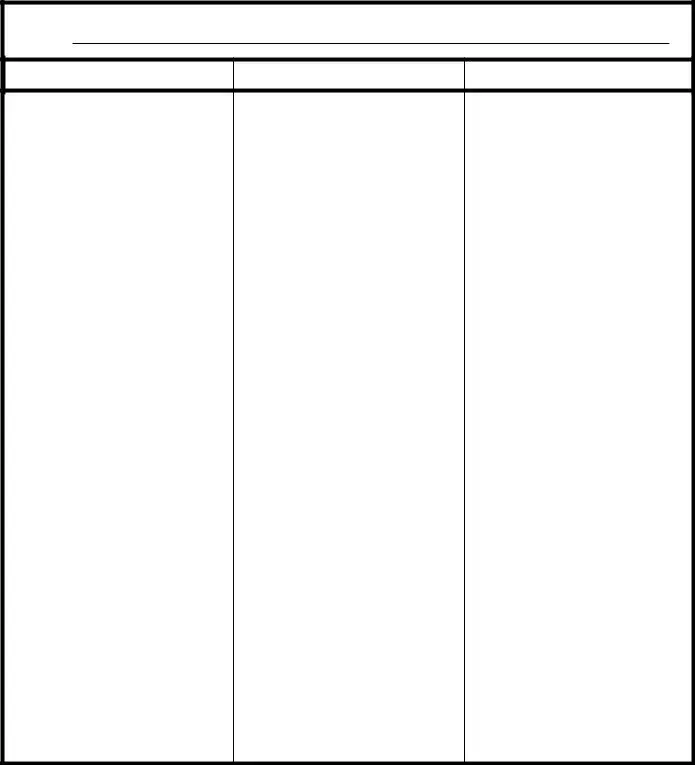What is a KWL Chart?
A KWL Chart is a simple tool used to facilitate learning and organize information. It helps individuals outline what they already know about a topic (K), what they want to learn (W), and what they have learned after conducting their research (L).
How do I fill out a KWL Chart?
Start by writing your name and the date at the top of the chart. For the "What I Know" section, list any information or facts you are already aware of related to your topic. In the "What I Want to Know" column, jot down questions or areas of interest you hope to explore. Finally, after your research, summarize what you learned in the "What I Learned" section.
Who can use a KWL Chart?
KWL Charts can be beneficial for students, educators, researchers, and anyone engaged in learning or teaching. They encourage critical thinking and help organize thoughts effectively.
When should I use a KWL Chart?
A KWL Chart is best used at the beginning of a learning project. It allows you to identify existing knowledge and set clear learning objectives. You can also revisit it during or after the research process to reflect on what you've learned.
What are the benefits of using a KWL Chart?
Using a KWL Chart offers several advantages:
-
Enhances engagement by encouraging curiosity.
-
Clarifies what is known and what needs to be learned.
-
Facilitates retention by summarizing new information learned.
-
Provides a structured approach to research and inquiry.
Can I use a KWL Chart for group projects?
Yes, a KWL Chart can be effective for group projects. Each group member can contribute to the chart, fostering collaboration. After research is completed, groups can collectively discuss and summarize what they learned, enhancing the learning experience for everyone involved.
While there isn’t a strict format, a KWL Chart typically contains three columns labeled "What I Know," "What I Want to Know," and "What I Learned." You can create your own chart using this structure, either on paper or digitally, to suit your needs.
What topics work best for a KWL Chart?
A KWL Chart can be applied to virtually any topic. It is particularly beneficial for complex subjects or areas with abundant information. Consider using it for subjects like science, history, literature, or current events, where exploration and inquiry are crucial.
How can I make the most out of my KWL Chart?
To maximize the effectiveness of your KWL Chart, be specific in the "What I Want to Know" column. Use clear, detailed questions to guide your research. Additionally, keep your "What I Learned" section updated as you gather new insights. Regularly reviewing the chart can reinforce learning.
Where can I find a KWL Chart template?
You can easily create a KWL Chart template using basic word processing software or spreadsheets. Alternatively, many educational websites offer downloadable templates. These resources can help you start using the KWL method without needing to design your own chart from scratch.

